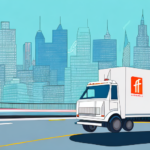Understanding the Importance of Last Mile Fulfilment in E-commerce
Last mile fulfilment is the process of delivering goods from a distribution center to the customer's doorstep. It constitutes the final and most crucial part of the e-commerce fulfilment process, often accounting for up to 53% of total delivery costs (ShipScience Insights). In recent years, last mile fulfilment has emerged as a significant differentiator in the competitive e-commerce landscape. Businesses that excel in this area can enhance customer satisfaction, foster loyalty, and gain a competitive advantage. A seamless last mile experience not only meets but exceeds customer expectations, leading to higher customer retention and increased revenue.
Challenges in Last Mile Fulfilment and Strategies to Overcome Them
High Cost Management
One of the primary challenges in last mile fulfilment is managing the high costs associated with transportation, labor, and technology. These expenses can significantly impact the overall profitability of e-commerce businesses. To mitigate these costs, companies can:
- Implement route optimization software to enhance delivery efficiency.
- Utilize autonomous delivery vehicles and drones to reduce labor costs.
- Partner with third-party logistics providers to leverage their existing infrastructure.
Delivery Unpredictability
The unpredictability of the delivery process can lead to delayed deliveries and missed delivery windows, negatively affecting customer satisfaction. Businesses can address this challenge by:
- Offering real-time tracking to keep customers informed about their delivery status.
- Enhancing communication channels to provide accurate delivery times.
- Implementing predictive analytics to anticipate potential delays and proactively manage them.
Increasing Demand for Fast Delivery
Customers today expect same-day or next-day delivery, putting immense pressure on businesses to streamline their processes. To meet these expectations, companies can:
- Invest in automated sorting systems to speed up order processing.
- Develop hub-and-spoke distribution models to shorten delivery routes.
- Collaborate with local delivery partners to enhance delivery speed.
Environmental Sustainability
There is a growing demand for environmentally sustainable delivery practices. Businesses can contribute to sustainability by:
- Adopting electric or hybrid delivery vehicles.
- Optimizing delivery routes to reduce fuel consumption.
- Using eco-friendly packaging materials to minimize waste.
Leveraging Technology to Enhance Last Mile Delivery
Route Optimization Software
Route optimization software helps businesses plan the most efficient delivery routes, reducing both time and fuel costs. By analyzing various factors such as traffic patterns, delivery windows, and vehicle capacities, these tools ensure that deliveries are completed promptly and cost-effectively (ShipScience Route Optimization).
Real-Time Tracking and Communication
Real-time tracking tools enable businesses to monitor deliveries in real-time, allowing for proactive identification of potential delays. Additionally, they facilitate better communication with customers, providing them with accurate delivery updates and enhancing their overall experience.
Automated and Contactless Delivery Solutions
Automated solutions such as drones and autonomous delivery robots are revolutionizing last mile fulfilment by enabling contactless deliveries. These technologies not only enhance delivery speed but also reduce human error and operational costs.
Sustainability through Technology
Technology plays a pivotal role in promoting sustainability within last mile delivery. By optimizing delivery routes and utilizing eco-friendly delivery methods, businesses can significantly reduce their carbon footprint while maintaining operational efficiency.
Best Practices for Optimizing Last Mile Fulfilment
Implementing the following best practices can significantly enhance the last mile delivery experience:
- Offer Flexible Delivery Options: Provide customers with choices such as same-day delivery, weekend delivery, and specific time slots to cater to their preferences.
- Provide Real-Time Tracking and Proactive Communication: Keep customers informed about their order status through real-time updates and notifications.
- Use Predictive Analytics: Anticipate demand patterns to allocate resources effectively and manage inventory.
- Invest in a User-Friendly Delivery Platform: Ensure that your delivery platform is mobile-optimized and easy to navigate for a seamless customer experience.
- Train Delivery Personnel: Equip delivery staff with the necessary training and tools to provide a professional and courteous service.
- Adopt Sustainable Practices: Utilize electric vehicles, optimize routes to minimize fuel consumption, and use eco-friendly packaging materials.
Innovations Transforming Last Mile Delivery
The last mile delivery landscape is rapidly evolving with technological advancements. Some of the most notable innovations include:
- Drone Delivery: Unmanned aerial vehicles that can quickly deliver packages to remote or hard-to-reach locations.
- Robotic Delivery: Autonomous robots designed to navigate urban environments and deliver packages directly to customers’ doorsteps.
- Locker Delivery: Self-service lockers where customers can conveniently pick up their orders at their convenience, reducing the need for direct home deliveries.
- Curbside Pickup: Designated pickup points where customers can collect their orders without leaving their vehicles, enhancing convenience and safety.
Measuring Success: Key Metrics for Last Mile Fulfilment
To evaluate the effectiveness of last mile fulfilment strategies, businesses should monitor the following key metrics:
- On-Time Delivery Rate: The percentage of deliveries made on or before the promised delivery time.
- Delivery Accuracy: The percentage of orders delivered correctly without any errors or damages.
- Delivery Cost: The total cost incurred in delivering an order, including transportation, labor, and packaging.
- Customer Satisfaction: The percentage of customers who rate their delivery experience as satisfactory or excellent.
- Delivery Time Window: The specified time frame within which the delivery is made, impacting customer satisfaction based on flexibility and reliability.
- Failed Deliveries: The number of deliveries that are unsuccessful due to reasons such as incorrect addresses or recipient unavailability.
Tracking these metrics helps businesses identify areas for improvement, optimize their delivery processes, and enhance overall customer satisfaction.
Choosing the Right Partner for Last Mile Delivery
Selecting the appropriate logistics partner is crucial for ensuring seamless last mile fulfilment. When evaluating potential partners, businesses should consider:
- Reliability: Assess the partner’s track record in delivering orders on time and maintaining delivery accuracy.
- Cost-Effectiveness: Compare pricing structures to ensure that the partnership is financially viable.
- Technological Capabilities: Ensure the partner utilizes advanced technologies such as real-time tracking and route optimization.
- Customer Service: Evaluate the quality of the partner’s customer service and support mechanisms.
- Compliance and Insurance: Verify that the partner complies with industry standards and possesses adequate insurance coverage.
Partnering with a reliable and technologically advanced logistics provider can significantly enhance the efficiency and effectiveness of last mile delivery operations.
Balancing Speed and Cost in Last Mile Delivery: Finding the Sweet Spot
Achieving the right balance between delivery speed and cost is essential for maximizing efficiency and profitability in last mile fulfilment. Businesses must evaluate their customer base and market demands to determine the optimal balance:
- Fast Delivery Options: While offering same-day or next-day delivery can boost customer satisfaction, it often incurs higher costs. Businesses should assess whether the increased customer loyalty justifies the additional expense.
- Cost-Effective Delivery: Standard shipping options reduce costs but may lead to longer delivery times, potentially affecting customer satisfaction. Offering a mix of delivery speeds can cater to different customer needs and budgets.
- Optimizing Operations: Implementing efficient routing, automation, and strategic partnerships can help reduce costs without compromising delivery speed.
By carefully analyzing and adjusting the balance between speed and cost, businesses can meet customer expectations while maintaining profitability.
The Importance of Communication and Transparency in Last Mile Fulfilment
Effective communication and transparency are vital components of successful last mile fulfilment. Businesses should focus on:
- Order Status Updates: Provide clear and regular updates about the status of orders, including dispatch, transit, and delivery stages.
- Delivery Options and Policies: Clearly communicate available delivery options, associated fees, and any restrictions or exceptions.
- Customer Support: Offer accessible channels for customers to inquire about their orders and resolve issues promptly.
- Transparency in Billing: Ensure that all delivery-related costs are clearly outlined and justified to avoid customer confusion and dissatisfaction.
Transparent communication fosters trust, enhances the customer experience, and leads to higher levels of customer satisfaction and loyalty.
Conclusion
Optimizing last mile fulfilment is critical for businesses aiming to deliver an exceptional customer experience and maintain a competitive edge in the e-commerce sector. By addressing challenges, leveraging advanced technologies, implementing best practices, and measuring key performance metrics, companies can streamline their last mile delivery processes. Additionally, embracing innovations and maintaining transparent communication with customers further enhances the overall fulfilment strategy. Ultimately, businesses that prioritize and excel in last mile fulfilment are well-positioned to achieve sustained success and customer loyalty.






















